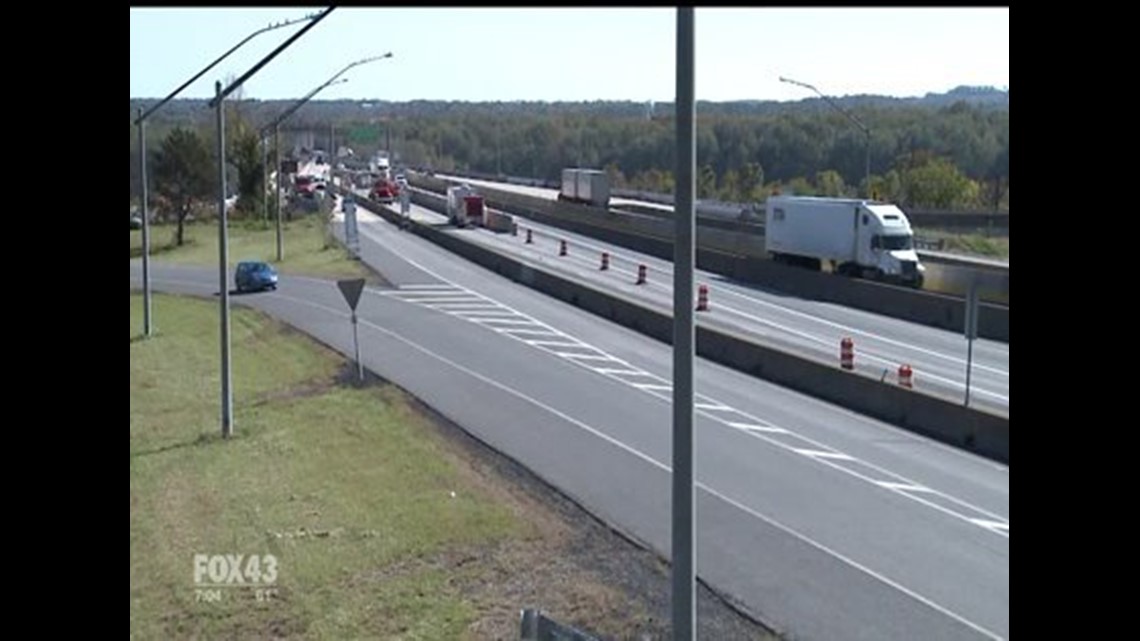

Roads and bridges that are deficient, congested or lack desirable safety features cost Pennsylvania motorists a total of $9.4 billion statewide –more than $1,600 annually per driver in the Harrisburg-York-Lancaster area – due to higher vehicle operating costs (VOC), traffic crashes and congestion-related delays. Increased investment in transportation improvements at the local, state and federal levels could relieve traffic congestion, improve road and bridge conditions, boost safety, and support long-term economic growth in Pennsylvania, according to a new report released today by TRIP, a Washington, DC based national transportation organization.
The TRIP report, “Future Mobility in Pennsylvania: The Cost of Meeting the State’s Need for Safe and Efficient Mobility,” finds that throughout Pennsylvania, 37 percent of major roads and highways provide motorists with a rough ride. A total of 42 percent of Pennsylvania bridges show significant deterioration or do not meet current design standards. The state’s major urban roads are becoming increasingly congested, with drivers wasting increasing amounts of time and fuel. And Pennsylvania’s rural non-interstate traffic fatality rate is significantly higher than the fatality rate on all other roads in the state.
Driving on deficient roads costs each Harrisburg-York-Lancaster area driver $1,646 per year in the form of extra vehicle operating costs as a result of driving on roads in need of repair, lost time and fuel due to congestion-related delays, and the cost of traffic crashes in which roadway features likely were a contributing factor. The TRIP report calculated the cost to motorists of insufficient roads in Pennsylvania’s largest urban areas: Harrisburg-York-Lancaster, Lehigh Valley-Reading, Philadelphia, Pittsburgh and Scranton/Wilkes-Barre.
The TRIP report finds that a total of 41 percent of major roads in the Harrisburg-York-Lancaster urban area are in either poor or mediocre condition. Traffic congestion in the area is worsening, causing 45 annual hours of delay for the average motorists. The average driver in the Harrisburg-York-Lancaster area wastes an average of 22 gallons of fuel each year due to congestion.
“From the perspective of the Perry County Chamber of Commerce, we are very concerned with the condition of our roads and bridges, especially in our rural community setting, and the need for continued maintenance to ensure safe passage,” said Frank Campbell, co-chair of the board of directors at the Perry County Chamber of Commerce. “Our local economy is fueled by the ability of our community members to travel safety and efficiently. Our family trucking business and the trucking industry in general supports funding initiatives that will keep the highways and bridges in safe repair.”
According to the TRIP report, 25 percent of Pennsylvania’s bridges are structurally deficient, meaning there is significant deterioration to the bridge deck, supports, or other major components. Pennsylvania has the highest share of structurally deficient bridges in the nation. These bridges are often posted for lower weight or are closed to traffic, restricting or redirecting large vehicles, including commercial trucks, school buses and emergency service vehicles. An additional 17 percent of the state’s bridges are functionally obsolete. These bridges no longer meet current highway design standards, often because of narrow lanes, inadequate clearances or poor alignment with the approaching road. Bridges that are structurally deficient or functionally obsolete are safe for travel and are monitored regularly by the organizations responsible for maintaining them.
Traffic crashes in Pennsylvania claimed the lives of 1,286 people in 2011. The traffic fatality rate in 2011 on Pennsylvania’s non-Interstate rural roads was 2.33 traffic fatalities per 100 million vehicle miles of travel, nearly two-and-a-half times higher than the 0.95 traffic fatalities per 100 million vehicle miles of travel on all other roads and highways in the state. A disproportionate share of highway fatalities occur on Pennsylvania’s rural, non-Interstate roads. In 2011, 45 percent of traffic fatalities in Pennsylvania occurred on rural, non-Interstate routes, while only 25 percent of vehicle travel in the state occurred on these roads.
“Addressing Pennsylvania’s needs for a safe, efficient and well-maintained transportation system will require a significant investment boost at the federal and state levels. But not addressing the state’s need for an improved transportation system will result in even greater costs to the public,” said Will Wilkins, executive director of TRIP.
